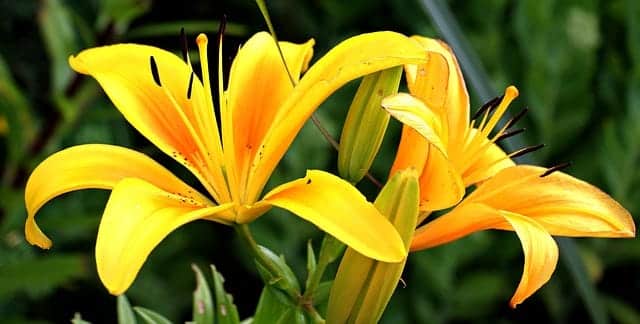The Azucena flower, a delicate and fragrant lily, has captured the hearts of gardeners and flower enthusiasts worldwide. Known for its striking beauty and captivating scent, the Azucena lily (Lilium candidum) is not just a visual delight but also holds a rich cultural significance and fascinating history. In this comprehensive guide, we delve deep into the world of Azucena flowers, exploring everything from their origins and cultivation to their uses and emerging trends in 2024.
Origins and History of the Azucena Flower
The Azucena lily, often referred to as the Madonna Lily, boasts a storied history that dates back thousands of years. This perennial plant is native to the Balkans and the Middle East, where it has been revere for its beauty and symbolic meanings. The name “Azucena” is derive from the Arabic word “as-susanna,” which means “the lily.” Historically, this flower has been associate with purity and virtue, often depicted in religious art and literature.
Botanical Characteristics
Appearance
The Azucena lily is easily recognizable by its pure white, trumpet-shaped flowers that can grow up to 10-16 inches tall. Each flower has six petals that open wide, revealing a golden-yellow stamen in the center. The plant itself can reach heights of 3-4 feet, with long, lance-shaped leaves that are a vibrant green.
Fragrance
One of the most enchanting features of the Azucena lily is its fragrance. The flowers emit a sweet, heady scent that intensifies in the evening, making them a popular choice for night gardens and floral arrangements.
Growth and Habitat
Azucena lilies thrive in well-drained, fertile soils and prefer full sun to partial shade. They are hardy in USDA zones 4-9, making them suitable for a wide range of climates. These lilies typically bloom in late spring to early summer, offering a prolonged display of beauty and fragrance.
Cultivation and Care
Planting
To cultivate Azucena lilies successfully, it is essential to plant them in the right conditions. The best time to plant Azucena bulbs is in the fall, allowing them to establish roots before the winter. Choose a location with well-drained soil and plenty of sunlight. Plant the bulbs 4-6 inches deep and space them about 8-12 inches apart to ensure adequate room for growth.
Watering and Fertilization
Azucena lilies require regular watering, especially during dry spells. However, be cautious not to overwater, as this can lead to bulb rot. It is advisable to water the plants deeply once a week, ensuring the soil is moist but not waterlogged. Fertilize the lilies in early spring with a balanced, slow-release fertilizer to promote healthy growth and abundant blooms.
Pruning and Maintenance
After the Azucena lilies have finished blooming, it is crucial to remove the spent flowers to encourage new growth. Cut back the stems to the base of the plant once they have turned yellow and died back naturally. This process helps direct the plant’s energy towards bulb development for the next growing season.
Pest and Disease Management
Azucena lilies are relatively hardy, but they can be susceptible to certain pests and diseases. Common issues include aphids, lily beetles, and fungal infections such as botrytis. Regular inspection and prompt treatment with appropriate insecticides or fungicides can help keep these problems at bay. Ensuring good air circulation around the plants and avoiding overhead watering can also minimize the risk of disease.
Uses and Symbolism
In the Garden
Azucena lilies are a versatile addition to any garden. Their striking white flowers create a stunning contrast against green foliage and other brightly colored blooms. They are perfect for borders, rock gardens, and container planting. Additionally, their fragrance makes them an excellent choice for planting near windows or patios where the scent can be fully enjoy.
Cultural and Symbolic Significance
Throughout history, Azucena lilies have been symbols of purity, innocence, and renewal. In Christian iconography, they are often associate with the Virgin Mary and are a common motif in religious art. The flowers are also use in various cultural ceremonies and festivals, symbolizing hope and new beginnings.
In Floral Arrangements
The beauty and fragrance of Azucena lilies make them a popular choice for floral arrangements. They are frequently use in wedding bouquets, religious ceremonies, and as decorative centerpieces. Their long vase life ensures that they remain a focal point in any arrangement for an extended period.
Emerging Trends and Ideas for 2024
As we look ahead to 2024, several trends and ideas are emerging in the world of Azucena lilies:
Sustainable Gardening
With the growing emphasis on sustainability, more gardeners are adopting eco-friendly practices when cultivating Azucena lilies. This includes using organic fertilizers, implementing water-saving irrigation techniques, and choosing disease-resistant plant varieties.
Vertical Gardens
Azucena lilies are finding their place in vertical gardens, adding a touch of elegance and fragrance to small urban spaces. These innovative gardening solutions allow for the cultivation of lilies in areas with limited ground space, enhancing the aesthetic appeal of walls and fences.
Hybrid Varieties
Breeders are continually developing new hybrid varieties of Azucena lilies, offering gardeners an exciting array of colors, sizes, and bloom times. These hybrids maintain the classic beauty and fragrance of the original while introducing unique characteristics that cater to diverse gardening preferences.
Wellness and Aromatherapy
The soothing fragrance of Azucena lilies is being harness in wellness and aromatherapy products. From essential oils to scented candles, the calming scent of these flowers is believe to promote relaxation and reduce stress, making them a valuable addition to holistic health practices.
Conclusion
The Azucena lily, with its captivating beauty and enchanting fragrance, remains a beloved flower among gardeners and flower enthusiasts. Whether you are looking to enhance your garden’s aesthetic appeal, explore its cultural significance, or embrace new gardening trends, the Azucena lily offers a wealth of possibilities. As we move into 2024, these fragrant lilies continue to inspire and delight, promising a bright future in the world of horticulture.

